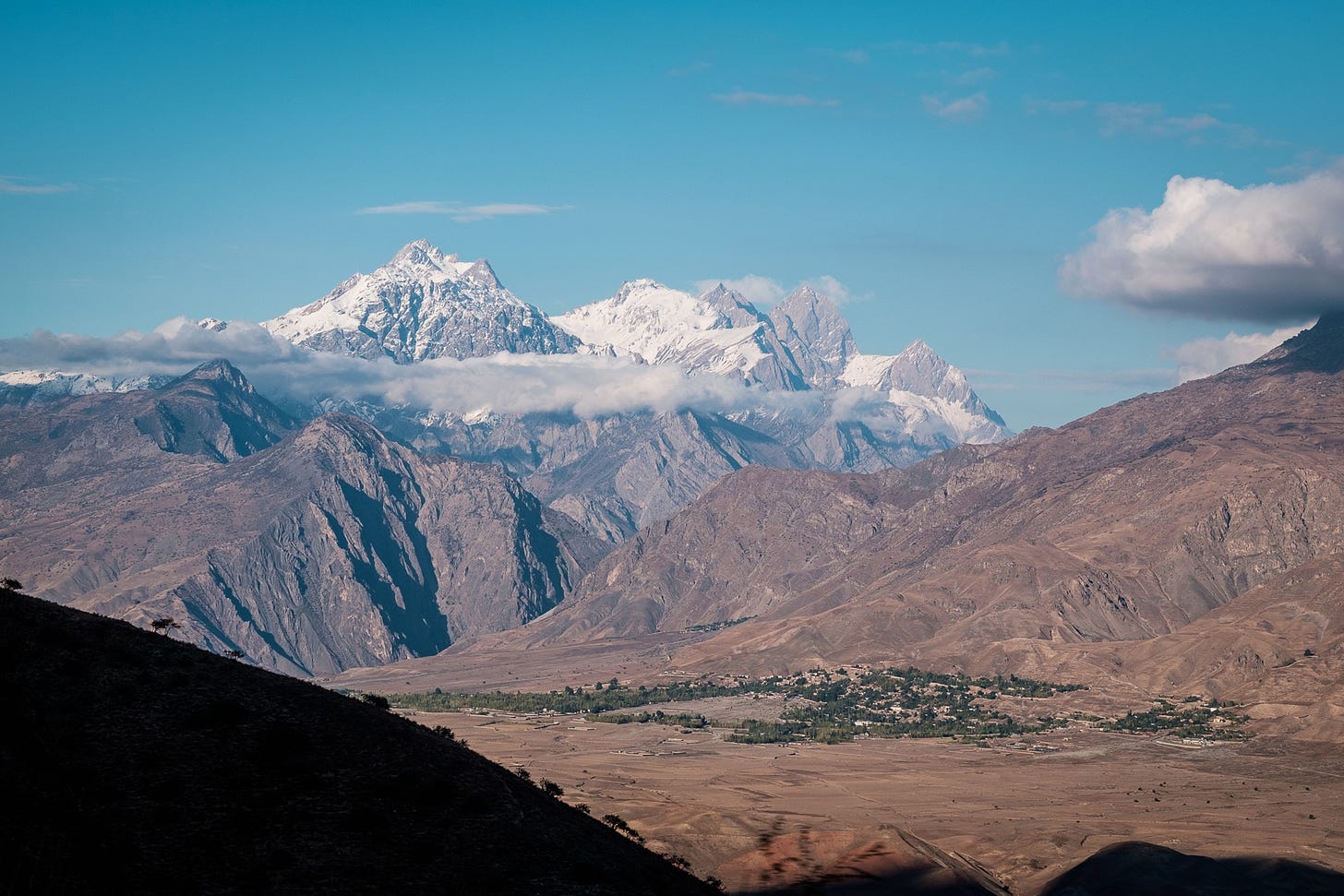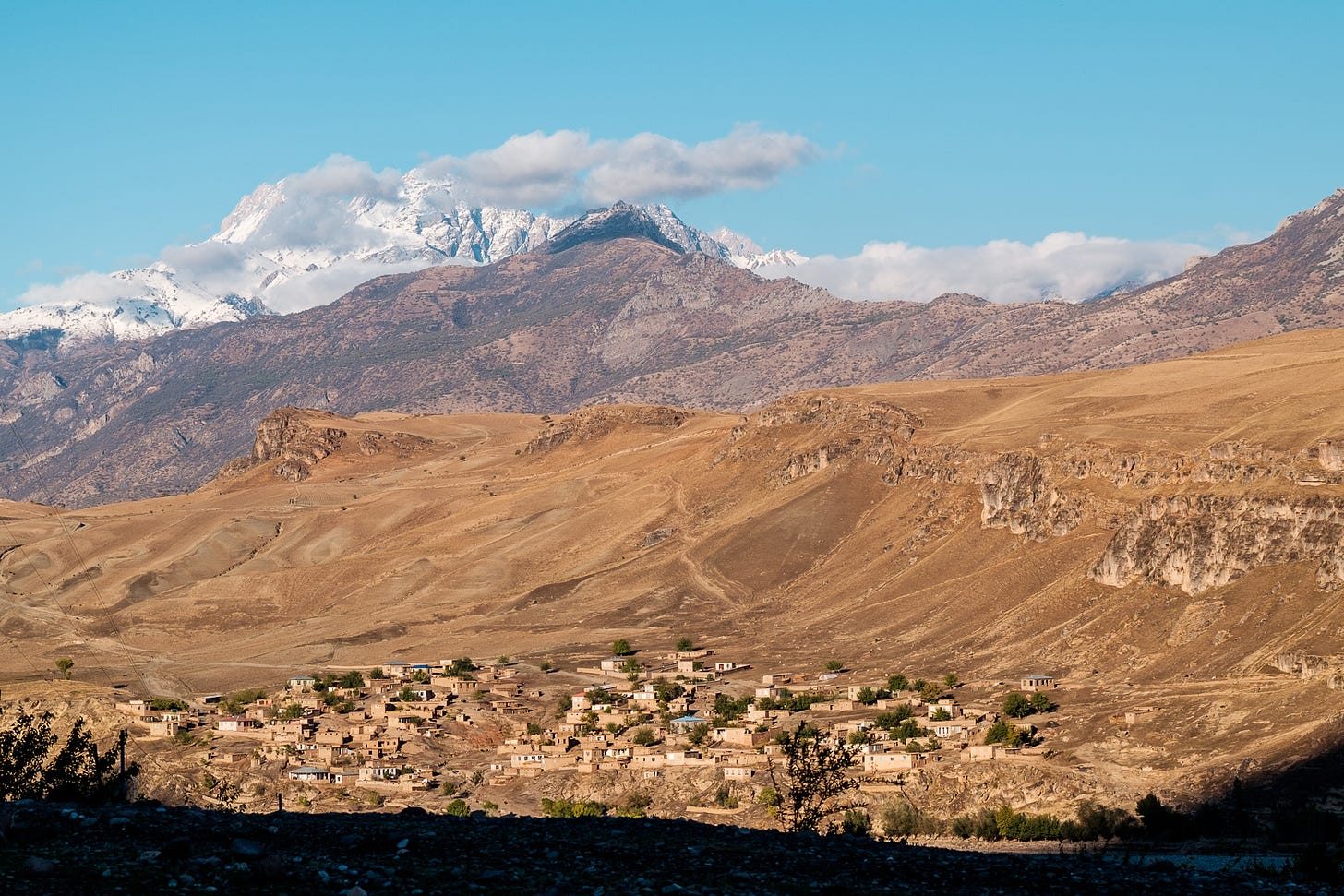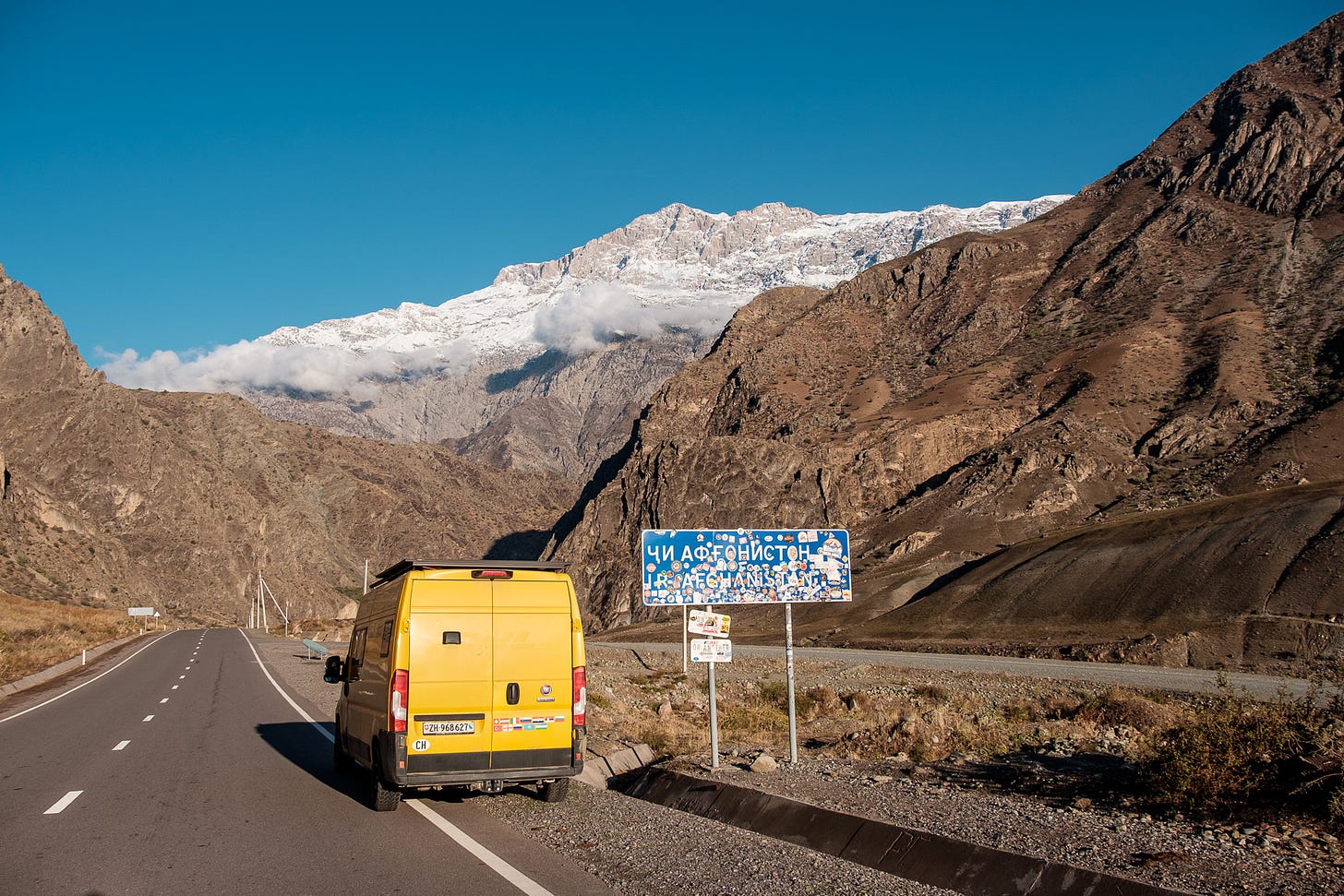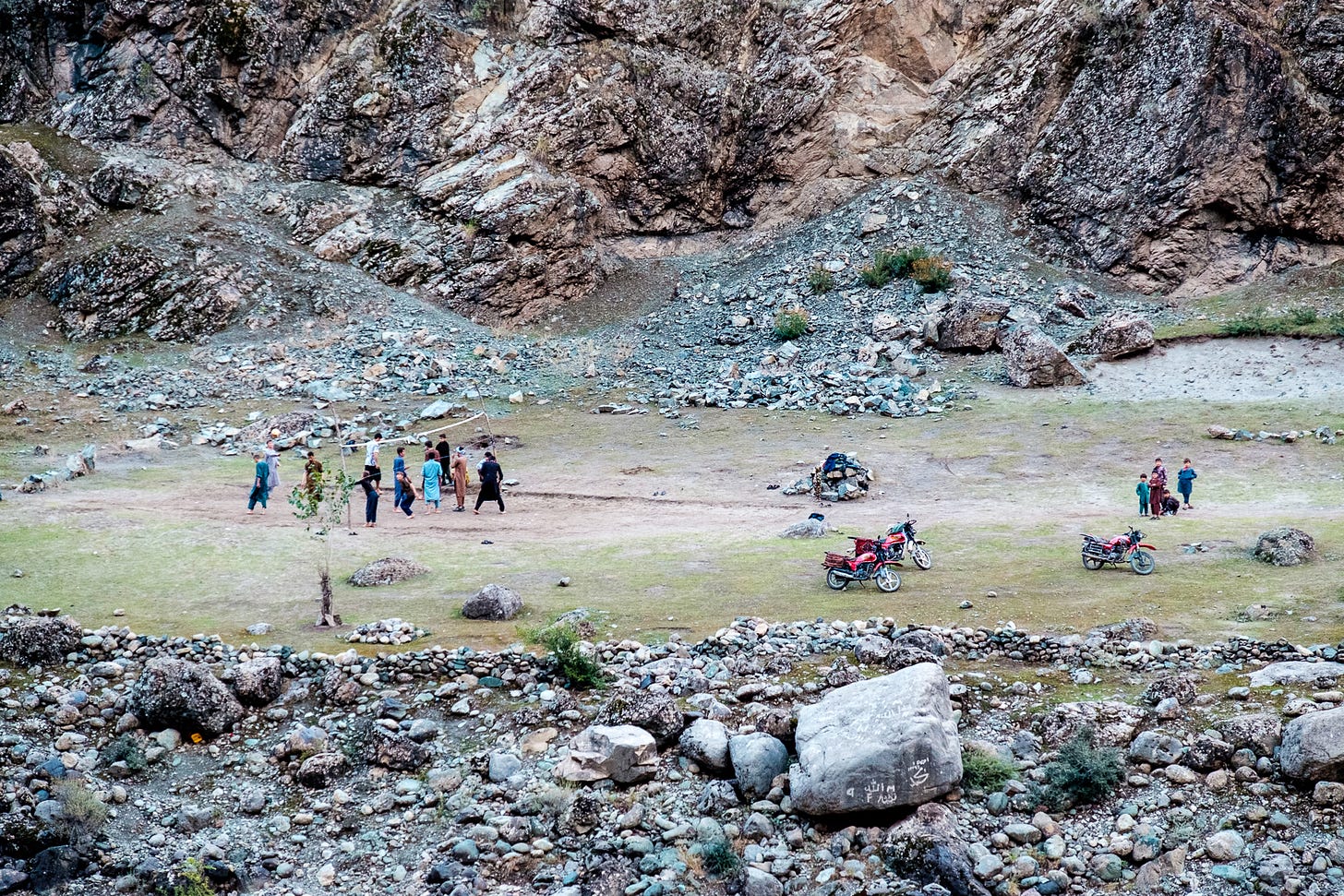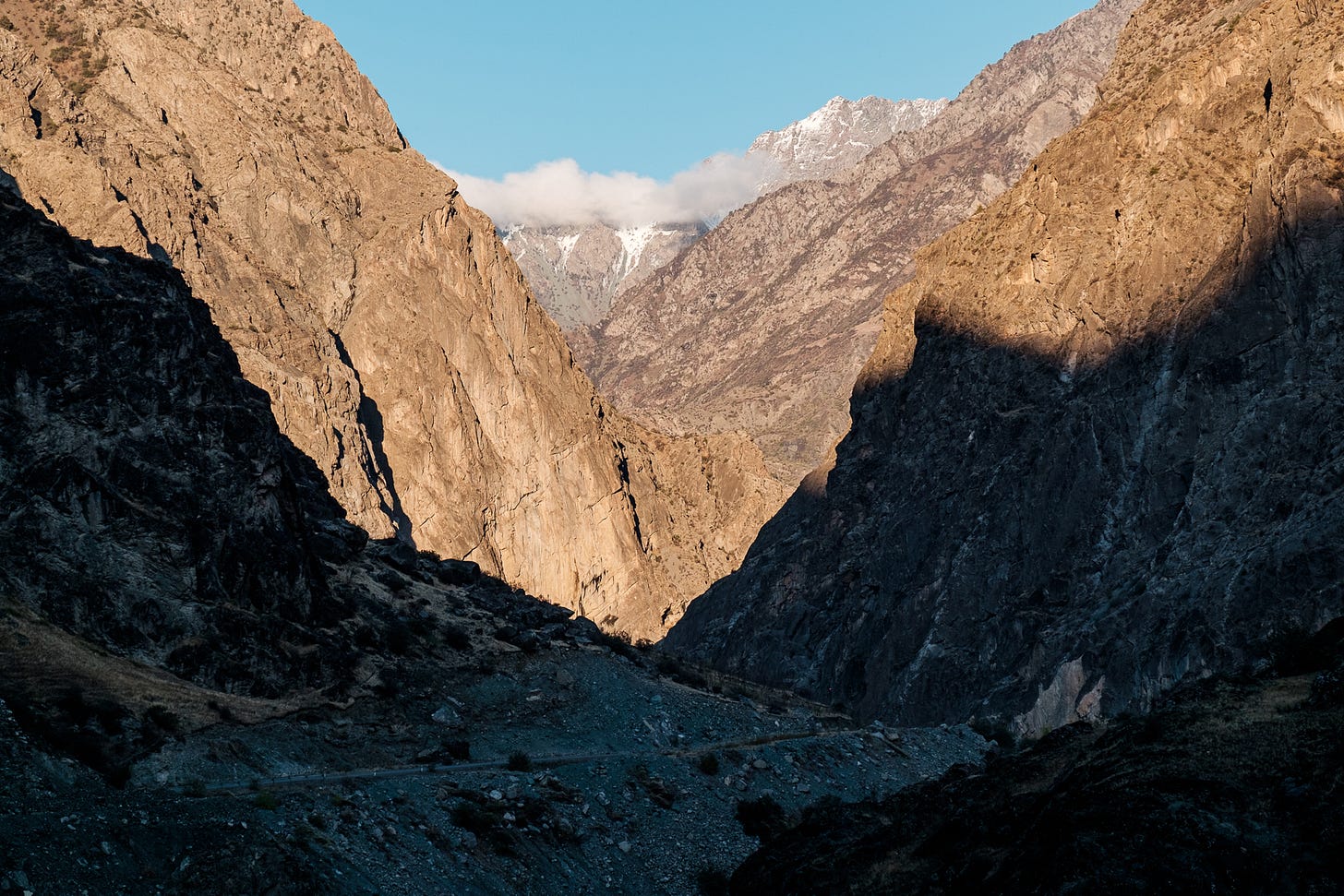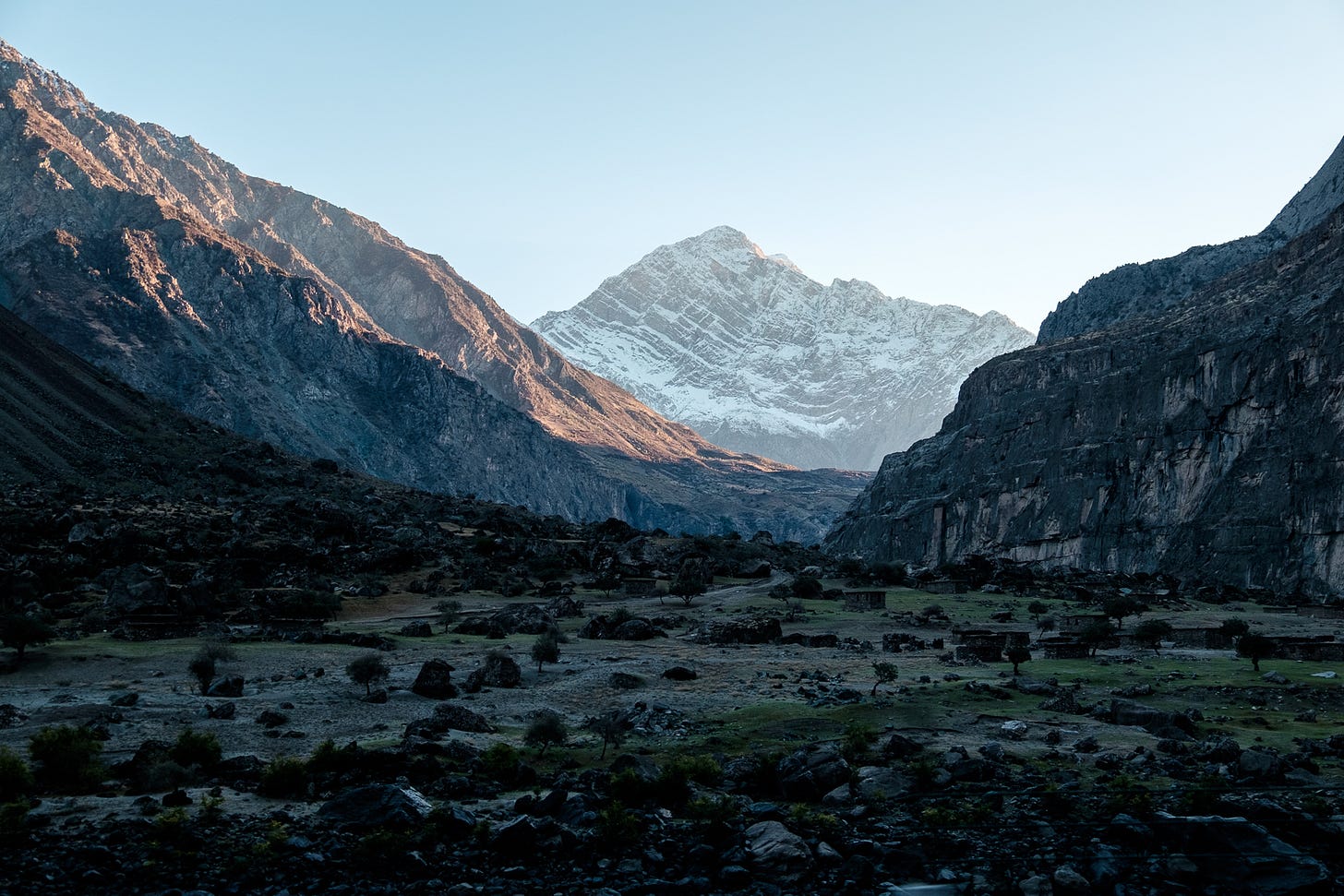
Leaving Dushanbe, the president of Tajikistan seemed to be waving goodbye, from the many propaganda photographs that we had learned to appreciate. We began by crossing a little pass and then the flatlands of southern Tajikistan. This was just a regular road connecting large towns, but it took us right to the border of the Gorno-Badakhshan region, better known as the Tajik high Pamirs. Along the road, we gave a ride to a Russian bicycle traveler that enjoyed downhills but tried to hitchhike uphills. Exiting Kulob, we felt like we were abandoning civilization. It started with a climb in the fog: we couldn’t see more than 5 meters in front of us. We really hoped it would clear up, this seemed rather dangerous to us given the roads that awaited us. In a freezing rain, we reached the first of the many military check points that segment the Pamir Highway. Here some armed men checked our permits in a friendly manner.
We continued upwards and, at the Chilishtak pass, the fog cleared up to reveal a wide, open valley. A river was flowing at the bottom, and on the other side: Afghanistan. We would continue to follow the Afghan-Tajik border – which matches the Panj river – for hundreds of kilometers over the next days, observing sparse houses, men riding donkeys, carpets drying in the sun, and even a volleyball game. We reached an old Afghan border point with a huge Afghanistan sign covered in stickers from all over the world. It is not every day you come across a sign that indicates the closest way to Afghanistan – it was well worth a picture.
We continued along the river, crossing dozens of 18-year-old Tajik border guards, patrolling with their AK-47 rifles slung on their back. They told us we couldn’t take pictures of the Afghan side and couldn’t camp in a way that we would be visible from Afghanistan – both things we ignored. For context, apart from a narrow dirt road following the river through the steep mountain flank, there was virtually nothing happening on the Afghan side. We reached Qalai-Khum in the dark, that’s a full 8 to 10 hours of driving. Here, our road reconnected with the original Pamir Highway. We parked in front of a truck stop, asked the owner if we could stay on his parking, bought a Fanta from him as means of payment, and fell asleep in a heartbeat.
We’re publishing this story in parts. Next time: Day 2 - from Qalai-Khum to Rushon






